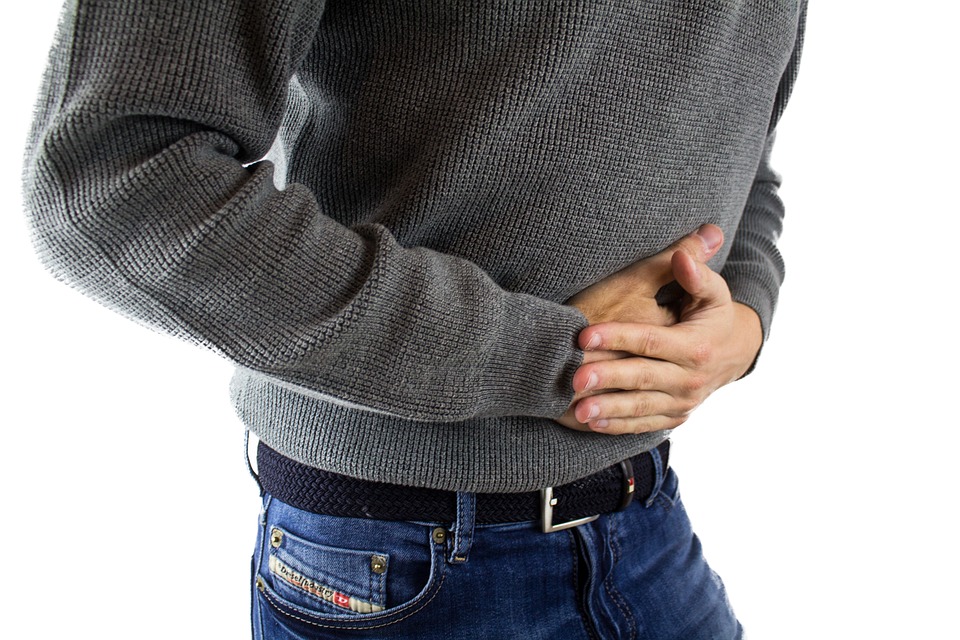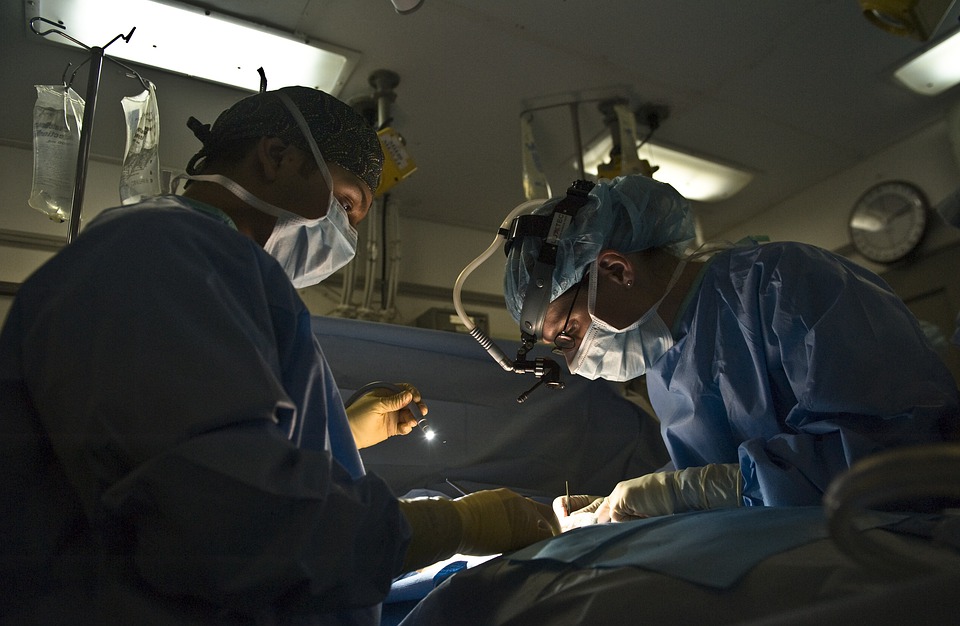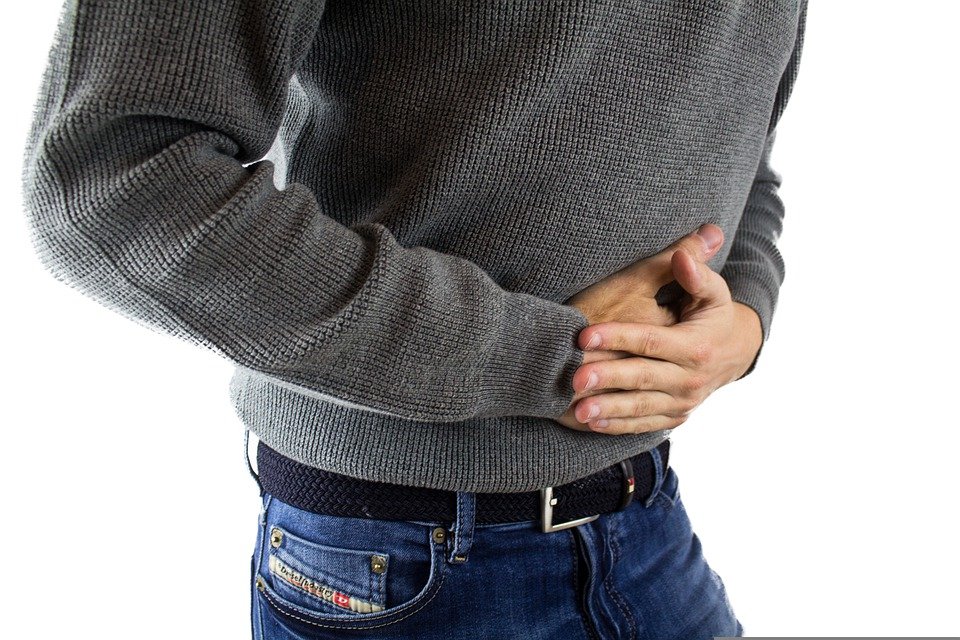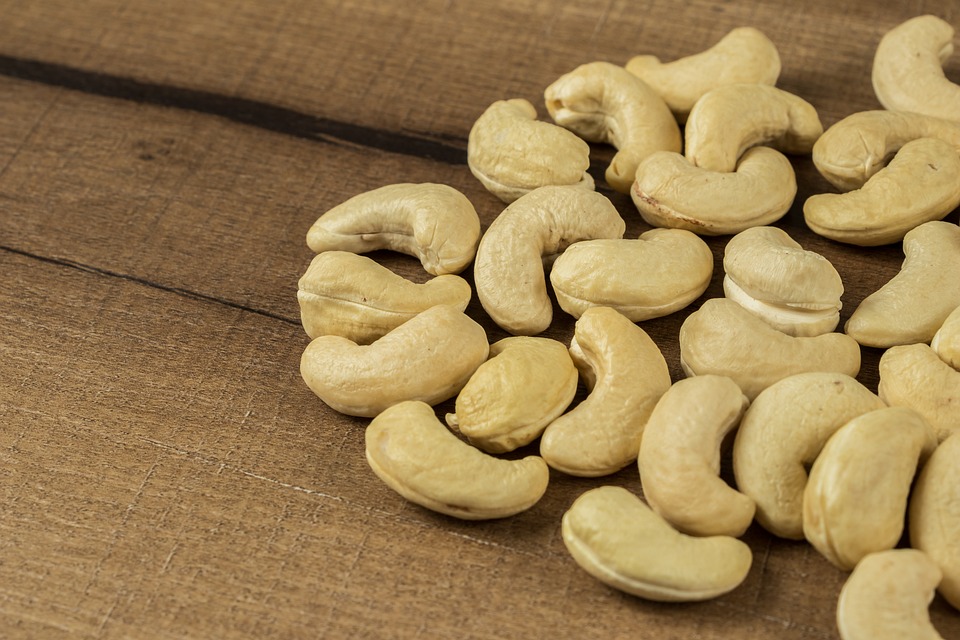
The first twelve fingers widths of the small intestine is known as the duodenum, stemming from the Latin word for twelve. It is known by its own title, and thus is set apart from the other parts of the bowel, because of everything that takes place in this section.
As the stomach agitates and breaks down the food that has been consumed, its contractions cause a small measure of the liquified meal (known as chyme) to be released into the small intestine. The sphincter between the stomach and small intestine only relaxes when the food has been broken down to a liquid form known as chyme, permitting a continuous trickle to pass through. The duodenum is not as shielded from acid as the stomach is, however it does get some form of chemical security coming from the electrolytes which are secreted not far away.
Ulcers that are found in the duodenum can be a source of pain and may also lead to bleeding. But pain isn’t a dependable warning sign. A large number of individuals suffering from duodenal ulcers do not complain of pain as a sign or indicator. Sometimes the feeling of unease is mistakenly believed to be due to hunger, causing an unintentional increase in food intake and an increase in weight. When there is no suffering, a bleeding ulcer is usually detected by the presence of blood in the feces or the anemia caused by the loss of blood.
Partial gastrectomy was a formerly frequent approach for curing duodenal ulcers. Surgery to remove part of the stomach is no longer the most common treatment for decreasing the production of stomach acid, as medications are now utilized instead.
Most duodenal ulcers are caused by H. pylori bacteria. In the majority of instances, the cause of ulcers is nonsteroidal anti-inflammatory agents, such as ibuprofen and aspirin. To determine if H. pylori is the culprit, a blood or breath test is obtained and depending on the results, a tailored combination of medications which includes antibiotics is prescribed for treatment.
It is believed that H. pylori infection is spread through close contact with an infected individual or through contact with vomit from someone who has the infection. A vaccine is being developed.
Esophageal and gastric ulcers are less frequently seen than other types of ulcers. Helicobacter pylori-associated gastric ulcers can increase one’s chances for stomach cancer, however, this does not seem to be relevant for duodenal ulceration.
Carbohydrates and proteins depart the stomach prior to anything else being digested from a meal. Fats take the longest to digest, usually taking up to four or five hours to completely break down. Fats are usually the last to pass through the stomach during digestion as they tend to stay on the surface of the liquid mixture.
It is not accurate to say that all carbohydrates or all fats behave in a uniform way. Take into account that the stomach exerted a lot of effort to prepare a combination of finely divided particles. The entry of chyme into the duodenum initiates an array of activities and an assortment of various digestive procedures.
The pancreas, liver, and gallbladder all discharge their digestive liquids into the duodenum through a single duct known as the bile duct. These liquids move via small tubes into the bile duct. It was as though predators lying in wait, the digestive enzymes, bile and bicarbonate rushed quickly down the bile duct and into the duodenum, ready to consume the chyme that was incoming.
The Incredible Lining of the Small Intestine
The width of the mature small intestine is approximately one and a half inches while its length can be up to twenty feet when remains relaxed and around ten feet when contracted. It’s the main site of digestion and absorption.
The ancients were puzzled by its great length. What was the purpose of all this coiled tubing if digestion occurred in the stomach like they thought it did? It is now clear that the stomach does not play a large role in breaking down and taking in essential substances. The stomach functions by churning food, producing acid, and preparing it for digestion and absorption. This muscular organ can also store food and then pass along chyme to the small intestine for further digestion.
The lining of the small intestine is truly remarkable. In a similar way that a terry-cloth towel is utilized to promptly soak up a spill, the absorbent lining of the small intestine is made bigger through wrinkling and circles. The creases in the inside are covered with minuscule appendages (villi) which are densely filled, similar to an incredibly pricey carpet.
The villi are each equipped with their own bristles, called microvilli, on the surface. It is estimated that when you add up the internal surface area of an individual’s small intestine, including the villi and microvilli, it equals the size of around a three-bedroom home, which is roughly 1800 square feet. This layer is only one layer of cells and is constantly updated. There’s a completely new lining about every three days. Intestinal cells which have been newly formed can be found at the base of the villi and they will travel towards the peak of the villi, where they become dislodged after three days.
The microvilli contain digestive enzymes like lactase (which breaks down the “milk sugar” lactose) and sucrase (which dissolves the “table sugar” sucrose).
Picture the chyme being propelled into the small intestine and rapidly combined with the nutritional bile that flows from the bile duct, then consistently pressed against a wide, active absorbing area that helps facilitate the speedy digestion and absorption. This technique is so successful that virtually every nutrient has been completely taken in before the digestive matter gets to the lower area of the small intestine. Despite this, there are exceptions: The amalgamation of Vitamin B12 with intrinsic factor is able to be taken in by the lower section. The bile acids which are present here get absorbed, so that they can be sent back to the liver and used to construct another batch of bile.
The amazing capability of the small intestine to be able to process nutrients effectively is shown by the medical procedure of bypassing most of the small intestine, which allows someone to eat more than usual and still manage to shed weight. During primarily the 1970s, this extreme measure was used on people who were severely overweight. In order to bring about rapid weight loss, almost all of the small intestine apart from approximately two to three feet was diverted to the side. Swiftly shedding pounds was a consequence—together with copious amounts of malodorous excrement.
Once the target weight reduction was attained, the intestines could be reconnected. However, if the original eating habits had not been altered, the weight that had been lost would come back. This practice fell out of favor when it was discovered that there were dangerous negative effects, like liver malfunction, that might occur. Bariatric surgery has been developed to provide a safer procedure for the obese. It restricts the amount of food that is digested, such as through gastric bypass.
Duodenal Ulcer
Peptic ulcer disease is a condition that includes duodenal ulcers. Peptic ulcer disease is a medical condition caused by the damaging of the lining of either the stomach or the first section of the small intestine, known as the duodenum. The anatomy of both the stomach area and intestine has a protective system that consists of layers before, on, and after the epithelium. The mucosal surface has been subjected to harm which caused it to move beyond the upper layer. As a result, ulceration has developed. The majority of duodenal ulcers cause dyspepsia as the central symptom; however, the severity can range and can also include gastrointestinal bleeding, blockage of the gastric outlet, puncture, or the formation of a fistula. Consequently, how the patient presents when being diagnosed with the condition or as the illness advances greatly influences the way the management is handled. It is important to think about whether a patient with stomach upset or upper abdominal discomfort has either a duodenal or gastric ulcer when they have taken an NSAID or been diagnosed with Helicobacter pylori in the past. Any person who has been diagnosed with peptic ulcer disease and particularly the duodenal ulcer should receive an analysis for H. pylori, as this bacterium regularly leads to this diagnosis.
Etiology
Two of the most frequent reasons for duodenal ulcers are long-term or heavy usage of non-steroidal anti-inflammatory drugs (NSAIDs) and testing positive for the bacteria Helicobacter pylori. Most people diagnosed have H. pylori, but as the number of H. pylori has gone down, more uncommon causes are becoming more common. Duodenal ulcers can also be caused by agents which, in a similar fashion to NSAIDs and H. pylori, interrupt the lining of the duodenum. Some conditions that can cause gastric ulcers include Zollinger-Ellison syndrome, tumors, poor blood supply, and a record of prior chemotherapy treatments.
Evaluation
Once it appears that H. pylori may be the cause of the patient’s illnesses based on the reported symptoms and a physical exam, further tests must be performed to definitively determine the diagnosis and the underlying cause. The diagnosis of peptic ulcer disease generally, and specifically for duodenal ulcers, can be done by seeing the ulcer with an upper endoscopy. The determination of whether or not any treatments are necessary will rely on the examinations the person has had in the past to evaluate their signs. Individuals who have had radiography imaging done and the results indicated ulcers, but are not exhibiting any warning signs of ulcers/rupturing or obstruction, can be handled without needing to go through an endoscopy to view the ulcers.
CT scans used to assess abdominal pain can support a diagnosis of ulcers which have not yet broken through the stomach lining. Most patients will require a recommendation to have an esophagogastroduodenoscopy (EGD) for a more detailed examination. The vast majority of duodenal ulcers (more than 95%) appear in the initial part of the duodenum, with around 90% present near 3 cm of the pylorus. Generally, these ulcers have a diameter of less than or equivalent to 1 cm. For patients who cannot have an esophagogastroduodenoscopy, barium endoscopy can be used as an alternative. Once the diagnosis of peptic ulcer disorder has been boiled down, it is essential to detect the cause of the sickness in order to create a treatment scheme for the afflicted person, which would be good for not only current relief but also for a lasting solution to avoid a comeback.
The relationship between H. pylori and duodenal ulcers is very strong, so anyone being checked for H. pylori will need more testing in order to be diagnosed definitively. A biopsy taken of the tissue while undergoing an EGD procedure can help make a diagnosis. Alternative non-invasive means of determining if H. pylori is a contributing factor may be explored. If the patient has had a EGD conducted, samples can be taken and analyzed more closely with a urease test and a microscopic examination. Alternative methods of diagnosis include a urea breath examination, stool antigen assessment, and blood tests. Blood tests which measure antibodies to determine previous infections are not very common since the results could still be positive if the person had already been exposed regardless of whether the virus is currently active. The urea breath test has high specificity. Despite this, results can ultimately be negative on account of the use of proton pump inhibitors (PPIs). Stool antigen testing can be used both to identify a diagnosis and to demonstrate that the infection has been eliminated, signaling that the infection is no longer active.
Treatment/Management
The first step in managing duodenal ulcers is to design a treatment strategy that is tailored to the severity of the affliction upon its identification. Individuals who exhibit issues, such as puncture or bleeding, may necessitate medical surgery. Most patients use antisecretory agents to reduce the acid exposure and provide relief in the area of the ulcer while also aiding in the healing process. The initial action for people who admit to taking a lot of NSAIDs is to recommend that they stop taking them, since NSAIDs could be an underlying cause and could even exacerbate the symptoms. Giving up smoking and drinking alcohol is also suggested, as these activities can make symptoms worse.
Drugs that reduce gastric acid production, such as H2 blockers and proton pump inhibitors, are referred to as antisecretory medications. The length of treatment can hugely differ depending on what kind of symptoms the patient presents, if they are likely to take the treatment seriously, and the potential for the problem coming back. Most people who receive treatment for H. pylori do not need to be on medication for an extended amount of time after the treatment, as long as the bacteria has been completely gotten rid of and they stay symptom free. Patients tested positive for H. pylori need to follow a treatment plan that includes three different medications (two antibiotics and a proton pump inhibitor), and it should be verified that the infection has been successfully gotten rid of. A comprehensive survey of 24 experiments that were chosen at random revealed that eliminating the H. pylori bacteria led to a noteworthy decrease in the frequency of both stomach and duodenal ulcers. Patients who have issues with their condition when it is initially evaluated must stick to the post-surgical instructions their general surgeon has given them. It is probable that those affected will need to receive medical attention for 8-12 weeks, or until a repeat endoscopy verifies that the ulcer has healed. Patients needing to be surgically treated may require laparoscopic repair if they have a perforated or bleeding ulcer that cannot be treated using endoscopy.
Differential Diagnosis
The evaluating provider’s evaluation of the diagnosis will likely be different depending on the initial symptoms that are exhibited. Individuals displaying epigastric abdominal pain, either with or without fluctuations in accordance to food intake, may be evaluated for gastritis, pancreatitis, gastroesophageal reflux disease (GERD), cholecystitis, cholelithiasis, biliary colic, or any potential cardiac issues with an atypical presentation. Patients displaying such signs as blood in vomit or in stools may potentially have either esophagitis, a vascular injury, or a cancer added to the list of possibilities.
Prognosis
The outlook of duodenal ulcers can range depending on how severe the initial symptoms were. NSAID-induced duodenal ulcers can be taken care of by halting the use of the drug and undergoing treatment for any corresponding symptoms, which tend to be resolved quickly. People who contract ulcers because of H. pylori will need to be treated for the ailment, with the success rate contingent on the elimination of the germ. Patients with serious ulcers or holes will tend to have greater mortality rates and might experience complications from surgical procedures.
Complications
Duodenal ulcers may lead to three main difficulties, which are loss of blood, a rupturing of the ulcer, and blockage of the digestive system. Most patients who are having a bleeding episode can be treated with endoscopic techniques. However, a minority of patients will require surgical intervention. Patients needing surgery will not be helped by endoscopic methods, especially if they have big sores or are unstable despite successful resuscitation. Approximately two to ten percent of individuals suffering from peptic ulcer disease will exhibit signs of perforation. Persons affected by this usually have a severe, widespread abdominal ache that may start off as discomfort in the upper stomach area and then become more spread out. Surgical intervention merits consideration in patients with perforated ulcers. A tiny number of people with the issue may have their perforation seal off without any extra assistance. The rarest complication related to duodenal ulcers is gastric outlet obstruction, and limited research is available with regards to both treatment and diagnosis.














